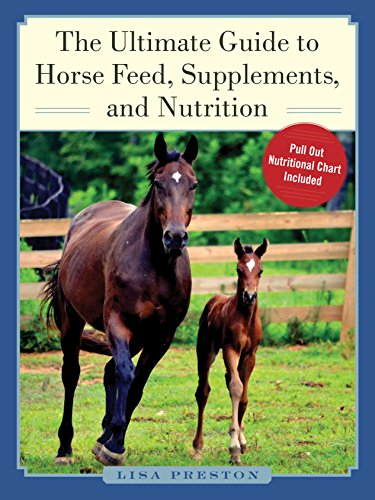Quarter Days: Happy Belated Lady Day
March 28, 2018 by Alina K. Field in category Quarter Days by Alina K. Field, Writing tagged as Feast of the Annunciation, Gregorian Calendar, Lady Day, Quarter DaysOr should I say, “Happy belated New Year”?
Greetings to my fellow history nerds. It’s time for another installment of my quarterly blog on historical topics.
In past posts, I talked about the English Quarter Days of Christmas, Midsummer’s Day and Michaelmas.
Lady Day
 To refresh your memory, Quarter Days were the four days during the year when rents were paid, servants hired, and contracts commenced. My Christmas blog inspired some comments about when New Year’s was celebrated. Marianne said:
To refresh your memory, Quarter Days were the four days during the year when rents were paid, servants hired, and contracts commenced. My Christmas blog inspired some comments about when New Year’s was celebrated. Marianne said:
“New Years used to be celebrated on the First Day of Spring. But when we changed from the Julian calendar to the Gregorian’s calendar, New Years change to January 1st. That’s why September, October, November and December are named the 7th, 8th, 9th and 10th months—even though they no longer are. While the Gregorian calendar was introduced in October 1582, we didn’t start using it until September 1752. April Fools were people who still celebrated the New Year in the Spring.”
In fact, that first day of spring on which the new year was celebrated was March 25th!
I mentioned before that most of the Quarter Days coincide with astronomical events (like the Vernal Equinox) and Pagan or Christian holidays. In the Catholic tradition which dominated most of Europe until the Reformation, March 25th is the Feast of the Annunciation, the date on which the Angel Gabriel visited the Virgin Mary. Thus it’s called Lady Day.
Why did the New Year’s Date Shift?
 I blogged a bit about the calendar changes in a 2016 Leap Day post. In short, the year began in January when the world ran on the Julian calendar (inaugurated by Julius Caesar) until 1582, when Pope Gregory introduced the Gregorian (what else would you call it?) calendar. With the implementation of the Gregorian calendar, countries adopting the calendar lost ten days.
I blogged a bit about the calendar changes in a 2016 Leap Day post. In short, the year began in January when the world ran on the Julian calendar (inaugurated by Julius Caesar) until 1582, when Pope Gregory introduced the Gregorian (what else would you call it?) calendar. With the implementation of the Gregorian calendar, countries adopting the calendar lost ten days.
Given that the calendar was devised by Catholics, England resisted and ran on the Julian calendar until 1752. Imagine subtracting ten days (or adding them) to line up your calendars. And vital statistic records, like births, deaths, and marriages? What a mess! As I mention in my 2016 post, George Washington’s birthday in 1732 was not February 22nd but February 11th.
Farming and Geese

A crowd chasing a goose. Wellcome Library
As the first day of spring, Lady Day was the most important Quarter Day for landholders and tenant farmers, and these contracts would run at least a full year to allow for the cycle of planting, cultivation and harvesting. Kathryn Kane has a thorough and well-researched post on this subject at her blog, The Regency Redingote.
Kathryn mentions that Lady Day apparently initiated goose-plucking season. Throughout the warmer months, quills (needed as writing implements) and down were harvested. And when the summer ended with Michaelmas, I seem to remember a feast of roast goose! Poor birds!
Weaving a Story
I know these are all little pieces of trivia, but as a historical romance author, I never know when I’ll be able to snag a detail or two to add to my story. Or maybe even craft a holiday-themed story, like I did with my latest release, A Leap Into Love, a Regency romance built around Leap Day traditions. I hope you too can find something useful here!
Happy spring! I’ll be back again in June for Midsummer’s Day.
Image credits: Wikimedia Commons
8 0 Read more
Affiliate Links
A Slice of Orange is an affiliate with some of the booksellers listed on this website, including Barnes & Nobel, Books A Million, iBooks, Kobo, and Smashwords. This means A Slice of Orange may earn a small advertising fee from sales made through the links used on this website. There are reminders of these affiliate links on the pages for individual books.
Search A Slice of Orange
Find a Column
Archives
Featured Books
INTIMATE RELATIONS
A woman in a window. A cop out of his element. A crime of unimaginable passion.
More info →THE ULTIMATE GUIDE TO HORSE FEED, SUPPLEMENTS, AND NUTRITION
A comprehensive guide of the dos and don'ts of equine nutrition--featuring a full-color pull-out chart.
More info →ONCE UPON AN ENCHANTED FOREST
The autumnal equinox is a celestial event that brings together harvest and celebration, symbolizes magick and transformation, and welcomes a balance of light and darkness. It’s a time when those who honor the changing seasons rest and reflect.
Or reap what they’ve sown.
More info →FOREIGN RELATIONS
A foreign woman is dead, two countries want her forgotten. Detective Finn O'Brien wants justice.
More info →Newsletter
Contributing Authors
Search A Slice of Orange
Find a Column
Archives
Authors in the Bookstore
- A. E. Decker
- A. J. Scudiere
- A.J. Sidransky
- Abby Collette
- Alanna Lucus
- Albert Marrin
- Alice Duncan
- Alina K. Field
- Alison Green Myers
- Andi Lawrencovna
- Andrew C Raiford
- Angela Pryce
- Aviva Vaughn
- Barbara Ankrum
- Bethlehem Writers Group, LLC
- Carol L. Wright
- Celeste Barclay
- Christina Alexandra
- Christopher D. Ochs
- Claire Davon
- Claire Naden
- Courtnee Turner Hoyle
- Courtney Annicchiarico
- D. Lieber
- Daniel V. Meier Jr.
- Debra Dixon
- Debra H. Goldstein
- Debra Holland
- Dee Ann Palmer
- Denise M. Colby
- Diane Benefiel
- Diane Sismour
- Dianna Sinovic
- DT Krippene
- E.B. Dawson
- Emilie Dallaire
- Emily Brightwell
- Emily PW Murphy
- Fae Rowen
- Faith L. Justice
- Frances Amati
- Geralyn Corcillo
- Glynnis Campbell
- Greg Jolley
- H. O. Charles
- Jaclyn Roché
- Jacqueline Diamond
- Janet Lynn and Will Zeilinger
- Jeff Baird
- Jenna Barwin
- Jenne Kern
- Jennifer D. Bokal
- Jennifer Lyon
- Jerome W. McFadden
- Jill Piscitello
- Jina Bacarr
- Jo A. Hiestand
- Jodi Bogert
- Jolina Petersheim
- Jonathan Maberry
- Joy Allyson
- Judy Duarte
- Justin Murphy
- Justine Davis
- Kat Martin
- Kidd Wadsworth
- Kitty Bucholtz
- Kristy Tate
- Larry Deibert
- Larry Hamilton
- Laura Drake
- Laurie Stevens
- Leslie Knowles
- Li-Ying Lundquist
- Linda Carroll-Bradd
- Linda Lappin
- Linda McLaughlin
- Linda O. Johnston
- Lisa Preston
- Lolo Paige
- Loran Holt
- Lyssa Kay Adams
- Madeline Ash
- Margarita Engle
- Marguerite Quantaine
- Marianne H. Donley
- Mary Castillo
- Maureen Klovers
- Megan Haskell
- Melanie Waterbury
- Melissa Chambers
- Melodie Winawer
- Meriam Wilhelm
- Mikel J. Wilson
- Mindy Neff
- Monica McCabe
- Nancy Brashear
- Neetu Malik
- Nikki Prince
- Once Upon Anthologies
- Paula Gail Benson
- Penny Reid
- Peter Barbour
- Priscilla Oliveras
- R. H. Kohno
- Rachel Hailey
- Ralph Hieb
- Ramcy Diek
- Ransom Stephens
- Rebecca Forster
- Renae Wrich
- Roxy Matthews
- Ryder Hunte Clancy
- Sally Paradysz
- Simone de Muñoz
- Sophie Barnes
- Susan Squires
- T. D. Fox
- Tara C. Allred
- Tara Lain
- Tari Lynn Jewett
- Terri Osburn
- Tracy Reed
- Vera Jane Cook
- Vicki Crum
- Writing Something Romantic
Affiliate Links
A Slice of Orange is an affiliate with some of the booksellers listed on this website, including Barnes & Nobel, Books A Million, iBooks, Kobo, and Smashwords. This means A Slice of Orange may earn a small advertising fee from sales made through the links used on this website. There are reminders of these affiliate links on the pages for individual books.







































